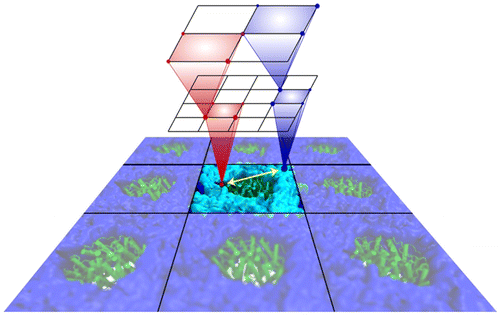Computational Modeling

Project Description
One of the key concepts in the design of the present Consortium is out ability to rationalize through computational means a vast amount of static and dynamics structural data with functional information. The computational Core is designed to generate, implement, validate and distribute state-of-the-art “tools” required for the studies of complex membrane protein systems. This includes expertise and services of well-established tools, novel methods and technologies that will support experimental studies, such as methods for analysis of spectroscopic data, and ground work on basic computational staples like force fields and biomolecular simulations. The computational methodologies developed by the core will be made available to the broader scientific community through our website.
The Computational and Modeling resource will focus on the development of tools and methodologies according to four key aims:
- Aim 1. To develop and establish standardized protocols for the rapid and objective optimization of accurate force fields at different levels of details for simulations of all molecules and chemical probes relevant to experimental studies. The plan is to set up an automated Force Field Server for generating and/or delivering optimized parameters for potential functions at different resolutions upon request by external users.
- Aim 2. To provide a unified and highly integrated methodology for collecting, analyzing and incorporating the information harvested from a wide range of disparate experiments (X-ray, NMR, ESR, EM, FRET, LRET, cross-linking, metal bridges, mutant cycles, etc) at moderate and low resolution to model and/or to refine the structure of the different functional forms/states accessible to membrane proteins. Novel developments will be incorporated into a ToolKit in the disseminated program VMD.
- Aim 3. To develop novel and efficient methodologies for documenting, characterizing and simulating the molecular motions that are essential for membrane proteins’ function, building on recent theoretical and computational advances in exploring the large conformational movements and transitions involved in the collective machinery and allosteric signaling of biomolecular systems. The plan is to set up a Web-based portal for managing such extensive computations by exploiting the full resources of the Grid with links to existing servers and databases for the collective dynamics of known structures.
- Aim 4. To develop reliable, collaboratively validated computational methods and a suite of programs and scripts to simulate experimental spectra (ESR, NMR, IR, LRET) in order to establish standards in the interpretation of experimental data.
Read an article about the Computational Modeling Core published by Genomeweb BioInform »


